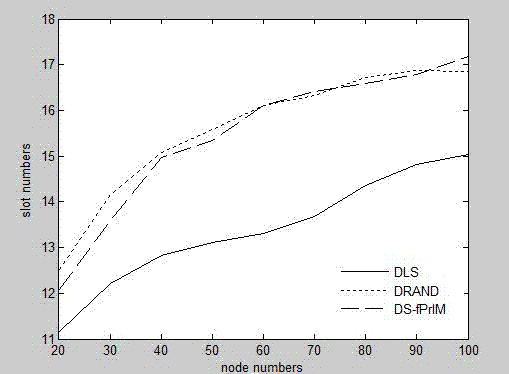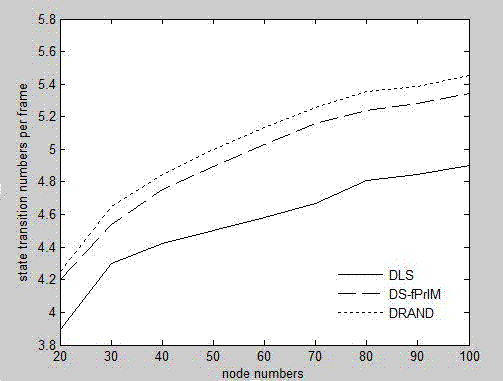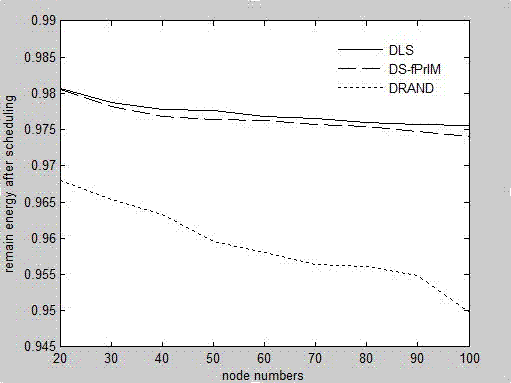Energy-efficient wireless sensor network distribution type link scheduling controller
A wireless sensor and link scheduling technology, which is applied in network topology, wireless communication, energy consumption reduction, etc., can solve the problems of long scheduling period and low channel utilization rate in the whole network, and reduce network overhead, reduce the number of state transitions, The effect of reducing network energy consumption
- Summary
- Abstract
- Description
- Claims
- Application Information
AI Technical Summary
Problems solved by technology
Method used
Image
Examples
Embodiment Construction
[0021] The present invention will be described in further detail below in conjunction with the accompanying drawings and specific embodiments.
[0022] The invented energy-efficient wireless sensor network distributed link scheduling controller constructs the interference graph within the two-hop neighbor range of each node, so that the links are scheduled according to their priority and interference degree in the interference graph. In the scheduling process, try to allocate adjacent time slots to nodes as much as possible to reduce energy consumption of nodes.
[0023] combine figure 1 , the distributed link scheduling controller of the present invention undergoes the following steps successively:
[0024] (1) Preparation phase: All nodes broadcast their own location information and one-hop neighbor node information, so that each node builds a local directed graph containing its two-hop neighbor node information. Each node then establishes the interference information of e...
PUM
 Login to View More
Login to View More Abstract
Description
Claims
Application Information
 Login to View More
Login to View More - R&D
- Intellectual Property
- Life Sciences
- Materials
- Tech Scout
- Unparalleled Data Quality
- Higher Quality Content
- 60% Fewer Hallucinations
Browse by: Latest US Patents, China's latest patents, Technical Efficacy Thesaurus, Application Domain, Technology Topic, Popular Technical Reports.
© 2025 PatSnap. All rights reserved.Legal|Privacy policy|Modern Slavery Act Transparency Statement|Sitemap|About US| Contact US: help@patsnap.com



